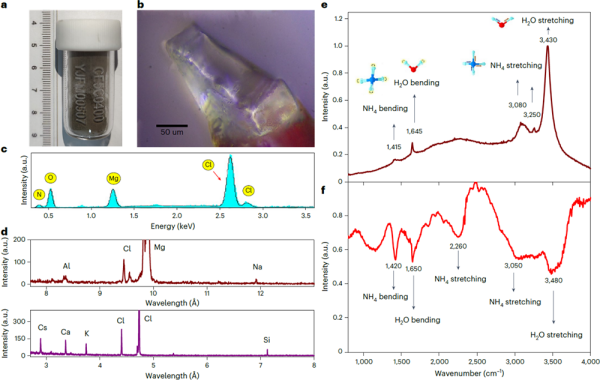Chinese scientists have made a groundbreaking discovery of molecular water in lunar soil, marking the first time such evidence has been found. The discovery was made among samples returned by the Chang’e-5 lunar mission and involves an unidentified mineral crystal named ULM-1.
ULM-1, rich in water and ammonia molecules, was identified by researchers from the Institute of Physics of the Chinese Academy of Sciences (CAS) and several prominent Chinese universities. The findings, published in the journal Nature Astronomy, suggest new potential sources of water on the Moon.
The mineral ULM-1, a hydrated mineral with the formula (NH4,K,Cs,Rb)MgCl3-6H2O, contains up to 41 percent water by mass. Both infrared and Raman spectroscopy revealed distinct vibrational peaks from water molecules and ammonium, providing a clear indication of hydrogen within the water molecules.
Interestingly, ULM-1’s chemical composition and crystal structure bear similarities to a rare mineral found on Earth, typically formed when hot basalt interacts with ammonia and water-rich volcanic gases. Researchers used nanoscale secondary ion mass spectrometry to compare the chlorine isotopic composition of ULM-1 to that of Earth minerals and confirmed a significant difference, consistent with lunar origin. This finding, along with chemical analyses, helped rule out Earth-based contamination or rocket exhaust as sources.
This discovery not only sheds light on the complex history of lunar volcanic degassing but also suggests that hydrated salts, which could contain water molecules, may exist even in the Moon’s sunlit regions. The presence of such hydrated minerals could have significant implications for future lunar exploration and the utilization of lunar resources.
The Chang’e-5 samples, which are the youngest basalts ever discovered from the highest latitude on the Moon, were crucial for this discovery. Until now, lunar samples from the Apollo missions had not revealed solid proof of water molecules on the Moon.
This finding opens up new possibilities for understanding the Moon’s evolution and for future exploration missions, providing a deeper insight into the presence of water on our nearest celestial neighbor.

